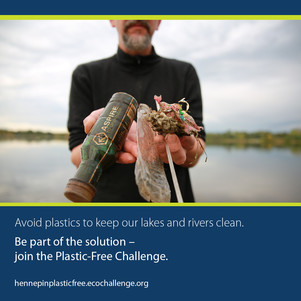
Plastics are problematic for many reasons. They create waste and litter, contribute to climate change, pollute our water, harm wildlife, and have largely unknown health impacts for us.
Be part of the solution by joining the Hennepin County Plastic-Free Challenge and committing to actions that help create a plastic-free world. Your actions help to reduce waste, protect water and wildlife, address climate change, and look after the health of ourselves and future generations.
|
About the Plastic-Free Challenge
The Plastic-Free Challenge is a month-long effort starting February 1 to reduce plastic consumption, especially single-use plastics, in ways that fit best in your lifestyle and are most impactful to reducing your footprint.
The online challenge has 70 actions you can choose from in seven categories. Sign up opens on January 1, and the challenge runs during the month of February 2022.
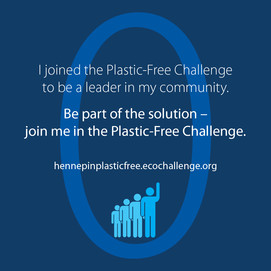
Once you sign up and create your profile, you can browse the categories and actions, check off the actions you already take, and select up to five one-time actions and five daily actions to make progress on during the four-week challenge.
You can also create a team to take the challenge along with your family, friends, neighbors, and colleagues. Or encourage an organization, business, or community group you are a part of to become a Hennepin County Plastic-Free Challenge Partner.
Learn more, sign up, and get ready to go plastic-free at hennepinplasticfree.ecochallenge.org.
|
Hennepin County is looking to contract with a performing arts organization to develop and give performances on recycling and waste reduction to elementary school (grades K through 5) audiences. This organization will help us expand our reach and educate more students on food waste reduction and recycling.
It is anticipated that the awarded contractor would perform 20 to 25 assemblies for elementary schools in Hennepin County in 2022 and 2023. Proposals are due by 4 p.m. on Wednesday, January 5. Learn more and apply.
Reminder: grant applications due January 13
Local government agencies, nonprofit organizations, institutions, and businesses in Hennepin County can apply for funding to implement projects that prevent the spread of aquatic invasive species.
Grant funding can be used to address pathways of aquatic invasive species introduction, provide education, promote behavior change, implement early detection and rapid response efforts, and pursue other ideas that prevent the spread of aquatic invasive species. Learn more and apply.
Study finds high prevalence of aquatic invasive species sold in pet stores and garden centers
A study completed this year of the prevalence of aquatic invasive species in pet stores and garden centers in Hennepin County found that 100% of the 20 pet stores and 79% of the 14 garden centers in Hennepin County carried regulated or prohibited species. Read the full AIS in pet stores and garden centers - inspection and education study (PDF).
Most common species found
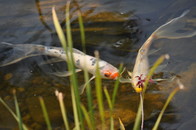
The most common species found in stores are goldfish and koi. Nineteen pet stores carried goldfish and 17 carried koi, which grow quickly and can outgrow their aquariums. Some of these fish are released into the wild by their owners, where they can dominate ecosystems and degrade habitat for other species. Stores were provided with handouts (PDF) and advised to provide information to their customers on proper disposal of plants and animals.
|
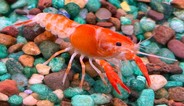
Crayfish of the prohibited species Procambarus clarkii (also known as red swamp or Louisiana crayfish) were identified for sale at two pet stores. The stores and supplier have been informed by the Minnesota Department of Natural Resources that this species cannot be sold or possessed in Minnesota, and they have cooperated with removing it from their inventories.
How to manage fish, pets, and aquatic plants
If you or your workplace has unwanted fish or other aquatic pets, contact your local pet store to see if they will take them back – many will. In addition, the Minnesota Aquarium Society holds events where they will take unwanted fish, plants and other aquarium species and sell them at an auction.
|
Each year, we reflect back on the work we accomplished and progress we made in collaboration with our residents, businesses, and partners to protect the environment.
In 2021, we committed to bold action on climate change, pursued initiatives that move us closer to zero waste, increased our efforts to protect and preserve our natural resources, recognized that environmental education, community engagement, and partnerships are critical to fulfilling our mission, and resumed important services that were paused to follow COVID-19 health and safety guidelines.
Committed to bold action on climate change

Hennepin County set a goal of achieving net zero greenhouse gas emissions by 2050 and adopted the county’s first Climate Action Plan, which outlines how the county will act boldly on climate change. The plan prioritizes disparity reduction and serves as a strong foundation for a coordinated approach to planning, policy development, and response to climate change.
The county’s climate action website, available at hennepin.us/climate-action, launched to provide resources and updates about the county’s response to climate change. Content is routinely added on climate solutions the county is pursuing as well as tips and resources for taking action at home and in your community.
The county’s climate action newsletter, Climate Action Updates, recently relaunched and will be sent every other month to provide updates, news, and links to tips and resources. Sign up to receive the Climate Action Updates.
Started planning the future of natural resources protection and zero waste
|

We began the process of updating the Hennepin County Natural Resources Strategic Plan, which will define our natural resources goals and strategies for the next 10 years. This is the first opportunity to incorporate the county’s climate and racial equity priorities into the foundation of the plan.
During the first phase of community engagement, which wrapped up in November, we heard that our community:
- Values ensuring a healthy environment for future generations
- Prioritizes protecting water resources and habitat for wildlife
- Are most concerned about the impacts of climate change on natural resources
- Want us to protect and restore natural areas, especially amid the pressures from development
- Called on us to focus on equity, health, education, and engagement
See a summary of the phase 1 findings (PDF). The next step is to develop draft goals, objectives, and actions for the plan, and the next phase of community engagement will take place in early 2022.
In August, the county board passed a resolution directing staff to develop a plan to map Hennepin County to a zero-waste future. The board specified that plan development include a broad community engagement process with a strong focus on equity and disparity reduction. The county is looking to partner with 10 to 15 groups with long-standing relationships with under-represented communities in Hennepin County to conduct engagement as part of the development of the zero-waste plan. Community engagement efforts will occur throughout 2022.
Pursued initiatives to prevent waste, reduce plastic use, and reuse building materials
We joined the U.S. Plastics Pact to build on county efforts to support residents and businesses who want to take action on plastic waste and pollution.

We held our first online Plastic-Free Challenge in January. More than 600 participants completed over 3,000 actions during the month-long challenge!
These actions resulted in more than 900 pounds of packaging waste avoided, over 600 plastic items, such as bottles, containers, utensils, and straws, not used, more than 5,000 minutes spent learning, and 1,800 pounds of carbon dioxide not emitted. Registration for the next Plastic-Free Challenge starts January 1.
We also launched a new grant program to increase waste prevention at businesses and funded seven grants totaling $269,000.
|
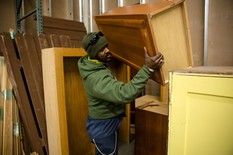
We encouraged the salvage and reuse of building materials through deconstruction grants. Funding was awarded to 11 homeowners and developers to use deconstruction techniques as an alternative to mechanical demolition in household construction and remodeling projects. The funding helped support the work of building material reuse organizations, including Better Futures Minnesota and newly established deconstruction firm, the Birch Group.
This success of the deconstruction grants program earned national recognition when Hennepin County was named the Deconstructor of the Year at the 2021 Build Reuse Conference!
Engaged residents, volunteers, and partners to protect water
|

We continued to work to prevent the spread of aquatic invasive species through research, public access redesigns, and creative approaches to outreach and awareness-raising. For example, Wayzata Sailing used grant funding from Hennepin County to work with local artists to create sails to educate the public about aquatic invasive species. We also released a report (PDF) summarizing findings of research into management and prevention options for goldfish, hybrid milfoil, and zebra mussels along with other accomplishment to prevent the spread of aquatic invasive species.

We also continued to partner with the Adopt-A-Drain program to keep pollution and litter out of our local waterways. Residents stepped up to sweep up, rake up, pick up the leaves before they go down the drain – 892 new adopters pledged to keep 1,787 drains clear in 2021. Residents reported preventing over 75,000 pounds of debris from entering local lakes, rivers, and streams in 2021!
|
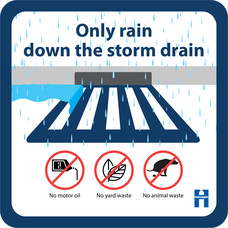
In partnership with Freshwater, we trained a cohort of eight Minnesota Water Stewards who then completed capstone projects to promote the health of surface water we all share. In October, we celebrated their work at the Confluence of Stewards event on the shores of Rice Creek and the Mississippi River.
To further encourage residents to protect our local lakes and rivers, we shared a new campaign – Only Rain Down the Storm Drain – with tips for disposing yard and pet waste, oil and grease. If you see something other than rain entering the storm drain, contact your city stormwater staff.
Increased access to organics recycling
|

We requested state bonding funding to support the development of an anaerobic digestion facility and Eco Center adjacent to the county’s Brooklyn Park Transfer Station. The facility would turn food scraps and other organic materials into clean energy and compost to grow healthy food. This would add critically needed regional capacity to recycle organics, create environmental education and green job opportunities, and help advance our healthy community, zero waste, and climate action goals.
We worked with cities to expand organics recycling options for residents. We provided funding for seven new drop-off sites that opened in 2021 or will open in 2022 in Crystal, Minneapolis, and Minnetrista. We supported Richfield with the launch of their organics recycling program in the fall and are helping Bloomington and Hopkins promote their organics recycling programs that will start in early 2022.
|
Developed strategies to improve the health of our community forest
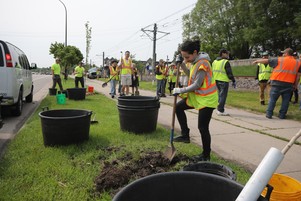
Hennepin County foresters developed the Hennepin County Community Forestry Strategic Plan that includes more than 50 strategies to achieve the goals of planting more trees, diversifying tree species throughout the county, increasing resiliency of the county’s community forest, building organizational capacity, and educating and engaging residents.
We awarded 21 Healthy Tree Canopy grants totaling about $404,000 to cities, affordable housing properties, schools, congregations, and neighborhood associations. More than 1,000 trees will be planted through the grant projects.
We also held our first spring tree sale, distributing over 2,000 seedlings to property owners to restore and improve woodland areas and increase wildlife habitat, and we celebrated Arbor Day by recognizing the climate-fighting power of trees.
Resumed hazardous waste drop-off services and raised awareness about hazardous waste reduction and disposal
After a year of limited operations to follow COVID-19 health and safety guidelines, many of our hazardous waste and drop-off recycling services resumed normal operations. The Hennepin County drop-off facilities in Bloomington and Brooklyn Park once again accepted large items like appliances and TVS for recycling, residents once again had access to more than 50 medicine drop boxes, and we held six household hazardous waste collection events.
|

We partnered with Ramsey and Washington counties to create the Be a Battery Hero campaign to raise awareness about proper battery disposal. The campaign was inspired by Marvel Comics with mischievous batteries that need to be put in their place.
To promote safer and lower waste household cleaning, we created green cleaning recipe cards. The cards help people to protect their health and the health of their families, pets, and the environment by making their own less-toxic cleaning products.
Protected natural areas and implemented best management practices on agricultural land
|
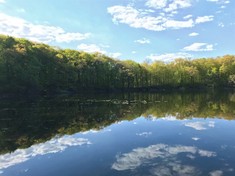
We furthered our efforts to protect the last, best remaining natural areas in Hennepin County by expanding the Wood-Rill Scientific and Natural Area in Wayzata, supporting habitat restoration work at the Cullen Nature Preserve in Minnetonka, and implementing projects to improve soil and restore prairie along the Minnesota River Valley in Eden Prairie.
|
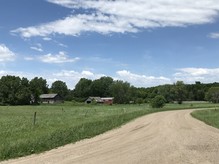
Building on Hennepin County’s rich history of agriculture and open space, we worked with farmers in the western part of the county to implement best management practices for growing crops and raising livestock. We also sought feedback on how best to support farms and natural areas amid pressures from development.
Supported environmental educators and expanded environmental education resources
For Earth Day 2021, the county board adopted a resolution recognizing that environmental education, community engagement, and partnerships are critical to meeting the county’s goals and fulfilling its mission.
|
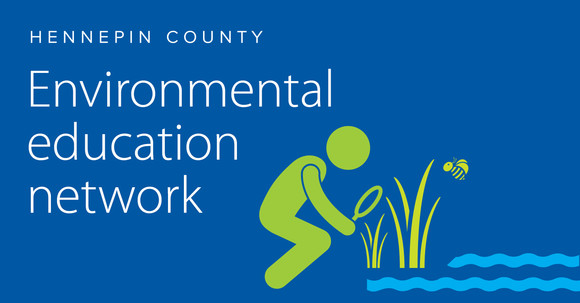
To support our environmental education network, which is open to anyone working to engage their community in learning about and taking action to protect the environment, we hosted three virtual network meetings with more than 100 total attendees and launched the Hennepin County environmental education network Facebook group that has grown to 137 members.
Licensed and inspected business to ensure proper management of hazardous waste
We license over 5,100 businesses to protect the environment by ensuring they are properly managing hazardous waste. We conducted more than 800 on-site compliance inspections in 2021. Additionally, we performed virtual inspections at 13 businesses and evaluated the status of 140 businesses through our self-audit process, licensing 81 of those businesses. We also processed the closure of about 95 businesses.
Helped clean up contaminated properties
We awarded 21 grants totaling more than $3 million for asbestos abatement, soil cleanup, and soil vapor mitigation through the Environmental Response Fund. The fund helps revitalize properties by helping to cover the costs of assessing and cleaning up contamination. The awards also help developments increase the tax base, enhance green space, keep the community in place, and create permanent jobs and affordable housing.
Explaining how food waste gets composted

WCCO’s Good Question segment recently tackled the question of how food waste and other organic material collected from homes and businesses get turned into compost.
See our organics recycling basics overview (PDF) for a summary of how organics are delivered to a large-scale compost site, mixed with yard waste, then laid in piles where bacteria and microorganisms do their work, heating the pile and breaking down the materials into compost. Finished compost is used in a variety of projects, such as school gardens, road construction, landscaping projects, community gardens, and sold at garden centers. Learn more about organics recycling and options to participate.
|
The future of public water accesses in Minnesota
Listen to a recent Minnesota Bound podcast episode where Hennepin County aquatic invasive species program manager, Tony Brough, talks about reinventing Minnesota’s public water accesses.
Between packaging from deliveries, decorations, gift wrap, and more, the holiday season is a time when we often have a lot of stuff to get rid of. As you clean up from the holidays, follow these tips for the best way recycle, reuse, and get rid of common holiday items:
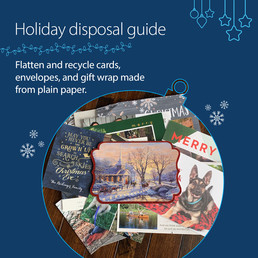
- Flatten and recycle cardboard boxes and packing paper at home. If you have a lot of boxes, check with your hauler to see if they can be placed alongside your recycling cart, or you can bring them to a Hennepin County drop-off facility.
- Flatten and recycle cards, envelopes, and plain paper used as gift wrap. Flattening paper before recycling will ensure it gets properly sorted at the recycling facility.
- Throw away gift wrap and cards that are glossy, shiny, or glittery.
|
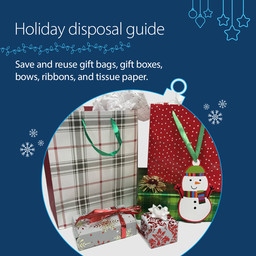
- Save and reuse gift bags, gift boxes, bows, ribbons, and tissue paper. Otherwise, these items should go in the trash.
- Bring string lights, electronics, and batteries to a drop-off location. These items are accepted at Hennepin County drop-off facilities, or you can find additional options on the Green Disposal Guide.
- Bring plastic bags, film, shipping envelopes, and bubble wrap to a recycling drop-off location – find options on the Green Disposal Guide.
|
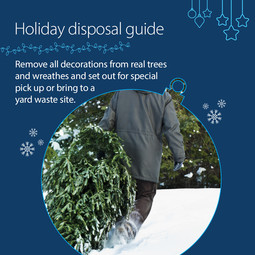
- Remove all decorations from real trees and wreaths and set them out for special pick up or bring them to a yard waste site. Check with your hauler or city for special pick-up options. See the Minnesota Department of Agriculture’s best management practices for holiday greenery for more information.
- Throw away tinsel and trees, wreaths, and other greenery that are flocked, or covered in fake snow, glittery, or contain decorations that cannot be removed.
|
|